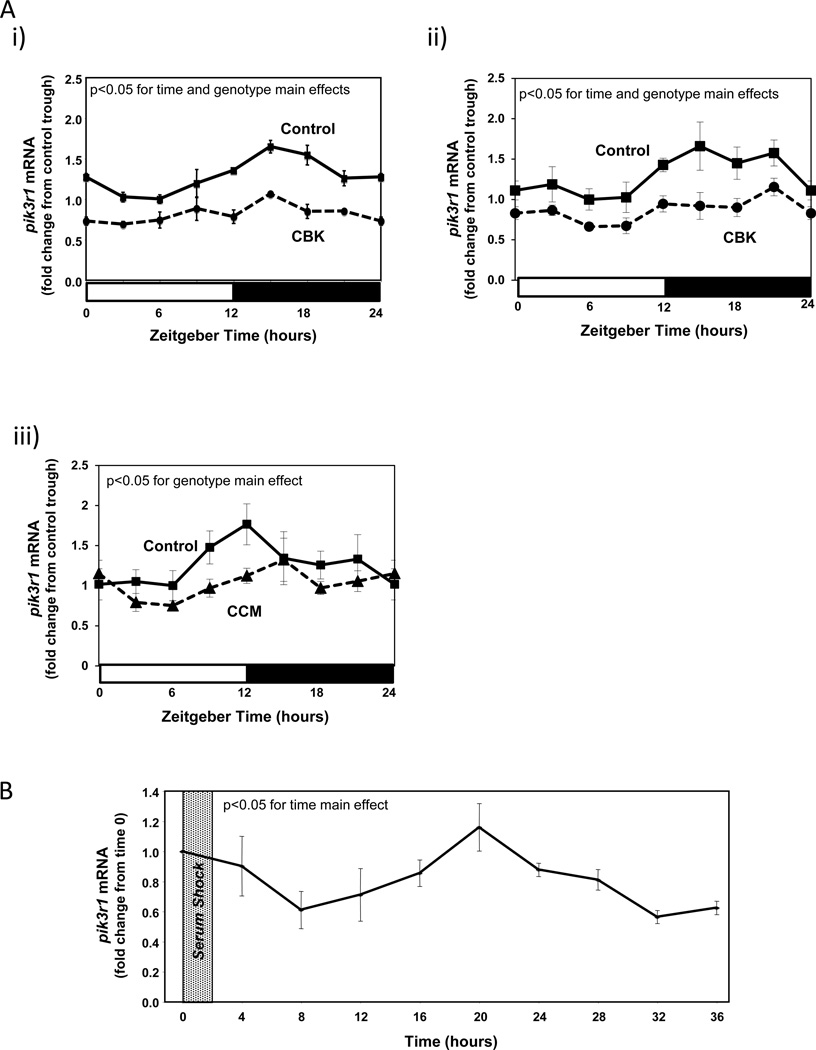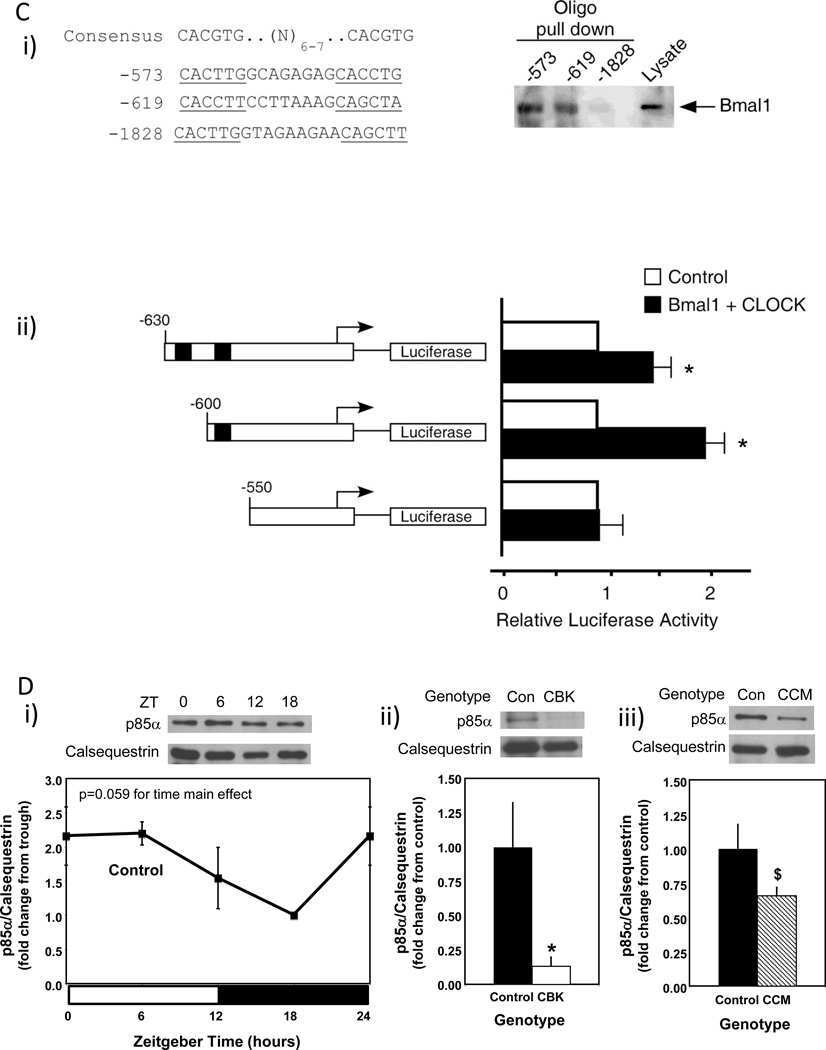Figure 4.
Alterations in time-of-day-dependent oscillations in pik3r1 mRNA in CBK (microarray [i], RT-PCR [ii]) and CCM (RT-PCR [iii]) hearts, compared to littermate controls (A). Persistence of circadian oscillations in pik3r1 mRNA in isolated adult rat cardiomyocytes following serum shock induced synchronization (i.e., challenged with 50% serum for 2 hours [shaded area]; B). Association of BMAL1 with two E-box consensus sequences in the Pik3R1 promoter (Ci); COS cells were transfected with expression vectors for Bmal1 and Clock, followed by DNA precipitation assay with biotinylated oligonucleotides (as described in the Methods section). BMAL1/CLOCK-mediated transcription of the Pik3r1 promoter (Cii); expression vectors for Bmal1 and Clock were co-transfected with Pik3r1 luciferase reporter and control plasmids into COS cells, as described in the Methods section (black boxes represent E-boxes at positions −619 and −573 in the Pik3r1 promoter). Diurnal variations in p85α protein levels in control hearts (Di). Decreased p85α protein levels in CBK (Dii) and CCM (Diii) hearts at ZT6. Relationship between PI3K, AKT, and GSK3β (Ei). CBK hearts exhibit phospho-Thr308-AKT (Eii) and phospho-Ser9-GSK3β (Eiii) levels that are comparable to fasted wild-type hearts. Mice were housed in a 12-hr light:12-hr dark cycle (lights on at ZT0). Hearts were isolated from 12 week old male CBK, CCM, and age-matched littermate controls. Note that ZT0 and ZT24 are identical data. Values are expressed as mean ± SEM (n=3–13; sample size range varies dependent on the parameter investigated). *, p<0.05 for CBK/CCM versus littermate control (post-hoc pair-wise comparison). $, p=0.076 for CCM versus control.



